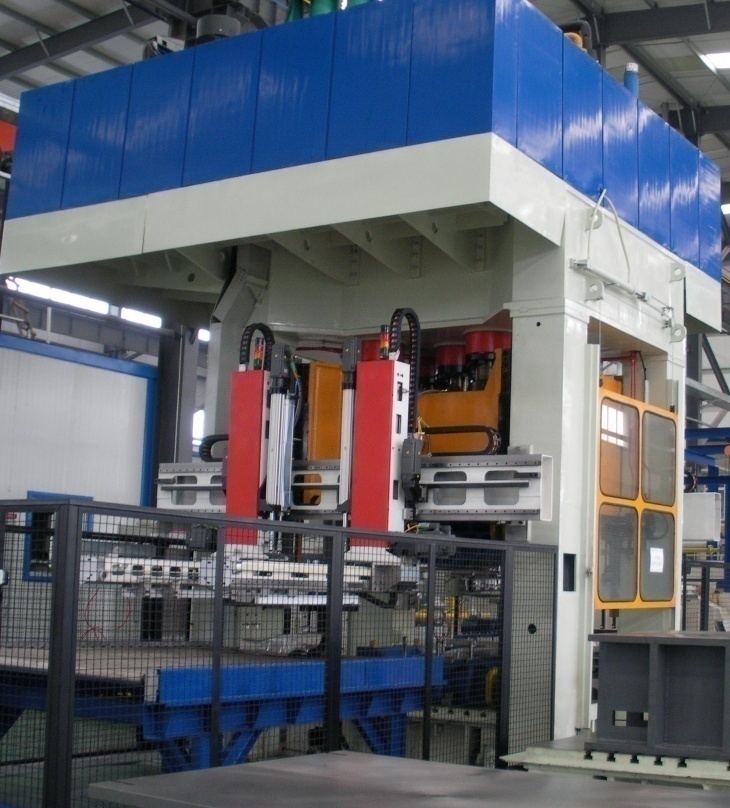Hot stamping is a new advanced manufacturing technology which is specialized in forming
super strength steel stamping in recent years. It is also the latest technology for manufacturing auto stampings.
The steel plate formed by hot stamping is a kind of special boron alloy steel plate. The steel plate is different from the traditional cold forming super strength steel. Cold-forming high strength steel plate such as dual-phase steel or multi-phase steel having been widely applied is formed through cold stamping under normal temperature. Microstructure and mechanical strength of component do not change basically before and after forming. However, steel plate used for hot stamping has low strength under normal temperature. The tensile strength is only 400~600MPa. The steel has good plasticity and formability. After forming and quenching through hot stamping, microstructure of component changes from ferrite and pearlyte to even martensite. Tensile strength can reach more than 1500MPa and hardness can reach 50HRC. The steel does not have springback while high dimensional precision. Adding boron is to improve the quenching performance of steel plate, making structural transformation smooth. Besides, to improve strength and other mechanical properties of materials, Ti, Cr, Mo, Cu, Ni and microelements can be also added.
Processes of hot stamping
1. Blanking
Blanking is the first process that stamps steel plate into required outer contour billet.
2. Austenitizing
Austenitizing includes heating and heat preservation. The process aims to heat steel plate to a appropriate temperature, autenitizing steel plate completely so that steel plate has good plasticity. The facility used for heating should be specialized continuous furnace. When the steel plate is heated to recrystallization temperature, the surface is oxidized easily, forming oxide skin. The oxide skin causes adverse impacts on subsequent processing. To prevent or reduce steel oxidation inside furnace, the furnace is filled with inert gas for protection or OSP is carried out on surface of plate.
3. Transferring
Transfer heated steel plate from furnace to hot forming mould. The steel should be transferred to mould as soon as possible. On the one hand prevent steel form being oxidized under high temperature. On the other hand ensure that steel plate is still keeping excellent plasticity under high temperature during forming for good plasticity.
4. Stamping and quenching
The steel should be stamped immediately after being put into mould to prevent temperature reduction from having too much influence on formability of steel. After forming, the mould should spot and pressurize for a certain time. On the one hand, control the shape of component. On the other hand, use cooling device inside mould to quench steel plate, making component form even martensite for good dimensional accuracy and mechanical properties.
5. Subsequent processing
Taken out from mould, the steel plate should be processed in further. For example, utilize pickling or shot blasting to eliminate oxide skin on surface of component. Trimming and borehole are also included. For hot stampings having extremely high strength, Trimming and borehole cannot be carried out by using traditional means. The processes should be carried out by laser technology.
The design of hot stamping mould is the core technology of hot stamping. It cannot only meet the requirements of component forming, but also have excellent cooling ability for good mechanical properties and dimensional precision.
